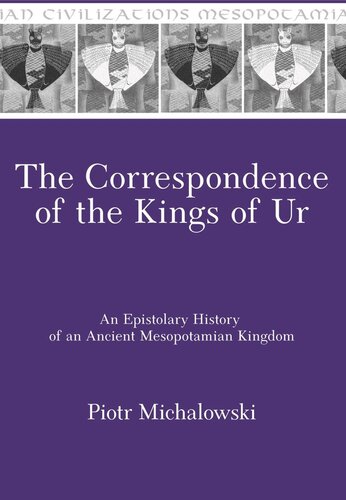

Most ebook files are in PDF format, so you can easily read them using various software such as Foxit Reader or directly on the Google Chrome browser.
Some ebook files are released by publishers in other formats such as .awz, .mobi, .epub, .fb2, etc. You may need to install specific software to read these formats on mobile/PC, such as Calibre.
Please read the tutorial at this link: https://ebookbell.com/faq
We offer FREE conversion to the popular formats you request; however, this may take some time. Therefore, right after payment, please email us, and we will try to provide the service as quickly as possible.
For some exceptional file formats or broken links (if any), please refrain from opening any disputes. Instead, email us first, and we will try to assist within a maximum of 6 hours.
EbookBell Team

0.0
0 reviewsThe Correspondence of the Kings of Ur is a collection of literary letters between the Ur III monarchs and their high officials at the end of the third millennium B.C. The letters cover topics of royal authority and proper governance, defense of frontier regions, and the ultimate disintegration of the empire and represent the largest corpus of Sumerian prose literature we possess. This long-awaited edition, based on extensive collation of almost all extant manuscripts, numbering more than a hundred, includes detailed historical and literary analyses, and copious philological commentary. It entirely supersedes the Michalowski’s oft-cited unpublished Yale dissertation of 1976.
The edition is accompanied by an extensive analysis of the place of the letters in early second-millennium schooling, treating the letters as literature, followed by chapters that contextualize the epistolary material within historical and historiographic contexts, utilizing many Sumerian archival, literary, and historical sources. The main objective here is to try to navigate the complex issues of authenticity, authority, and fiction that arise from the study of these literary artifacts. In addition, Michalowski offers new hypotheses about many aspects of late third-millennium history, including essays on military history and strategy, on frontiers, on the nature and putative character of nomadism at the time, as well as a long chapter on the role of a people designated as Amorites.
The included DVD includes various photographs at high resolution of most of the tablets included in the study.